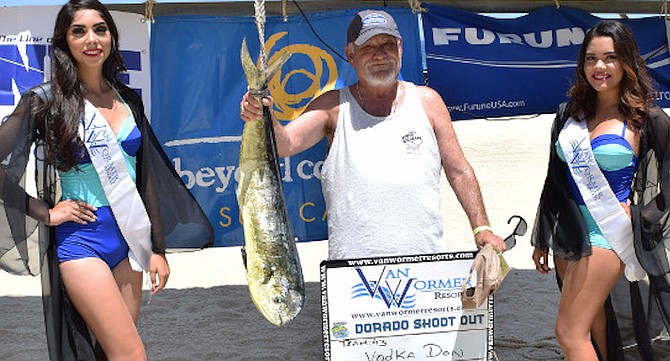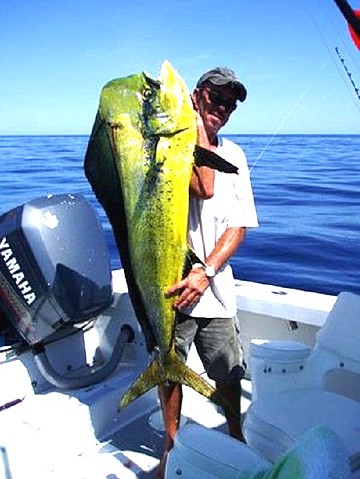 Facebook
Facebook
 X
X
 Instagram
Instagram
 TikTok
TikTok
 Youtube
Youtube

Mahi-mahi, their name in Polynesian, means “very strong.” Common in warmer waters worldwide, they have been a food fish for thousands of years. They are known by at least ten names around the globe. Here in the eastern Pacific, dorado; in the western Atlantic, the confusing name “dolphinfish,” often “dolphin.” I have heard: “I liked Hemingway’s The Old Man and the Sea, except for the part where he ate the raw dolphin.”

Dorado will rarely pass up an opportunity to eat. This is due to their rapid growth and short life-span. Where the calico bass might take 20 years to reach ten pounds, the dorado can grow from a two-inch fry to fifty pounds in four to five years, which is the limit of their life span.

The dorado population is healthy. Their fast growth rate and far-ranging migrations make them a food source as well as a target for sport-anglers. For anglers in our area, the fish can appear locally in late summer through early fall, especially in El Niño years.
I have seen them caught within a mile of La Jolla Shores; in 2014, one was filmed swimming next to the Queen Mary in Long Beach. But the warmer seas to our south and into the Sea of Cortez are where they are prolific. Dorado generally seek water between 70 and 80 degrees, so are mostly caught by multi-day to long-range trips out of San Diego landings.
This time of year, the East Cape of Baja California Sur on the warmer side of the collision of the Gulf of California and Pacific Ocean currents is where dorado are most active. For that reason, the East Cape Dorado Shootout is held in mid-July in the warm waters off Los Barriles, between Cabo San Lucas and La Paz. This Van Wormer Resorts-sponsored event, the 13th annual, is the largest fishing tournament in Southern Baja, with an average turnout of 125 teams each year.


Mahi-mahi, their name in Polynesian, means “very strong.” Common in warmer waters worldwide, they have been a food fish for thousands of years. They are known by at least ten names around the globe. Here in the eastern Pacific, dorado; in the western Atlantic, the confusing name “dolphinfish,” often “dolphin.” I have heard: “I liked Hemingway’s The Old Man and the Sea, except for the part where he ate the raw dolphin.”

Dorado will rarely pass up an opportunity to eat. This is due to their rapid growth and short life-span. Where the calico bass might take 20 years to reach ten pounds, the dorado can grow from a two-inch fry to fifty pounds in four to five years, which is the limit of their life span.

The dorado population is healthy. Their fast growth rate and far-ranging migrations make them a food source as well as a target for sport-anglers. For anglers in our area, the fish can appear locally in late summer through early fall, especially in El Niño years.
I have seen them caught within a mile of La Jolla Shores; in 2014, one was filmed swimming next to the Queen Mary in Long Beach. But the warmer seas to our south and into the Sea of Cortez are where they are prolific. Dorado generally seek water between 70 and 80 degrees, so are mostly caught by multi-day to long-range trips out of San Diego landings.
This time of year, the East Cape of Baja California Sur on the warmer side of the collision of the Gulf of California and Pacific Ocean currents is where dorado are most active. For that reason, the East Cape Dorado Shootout is held in mid-July in the warm waters off Los Barriles, between Cabo San Lucas and La Paz. This Van Wormer Resorts-sponsored event, the 13th annual, is the largest fishing tournament in Southern Baja, with an average turnout of 125 teams each year.
Comments